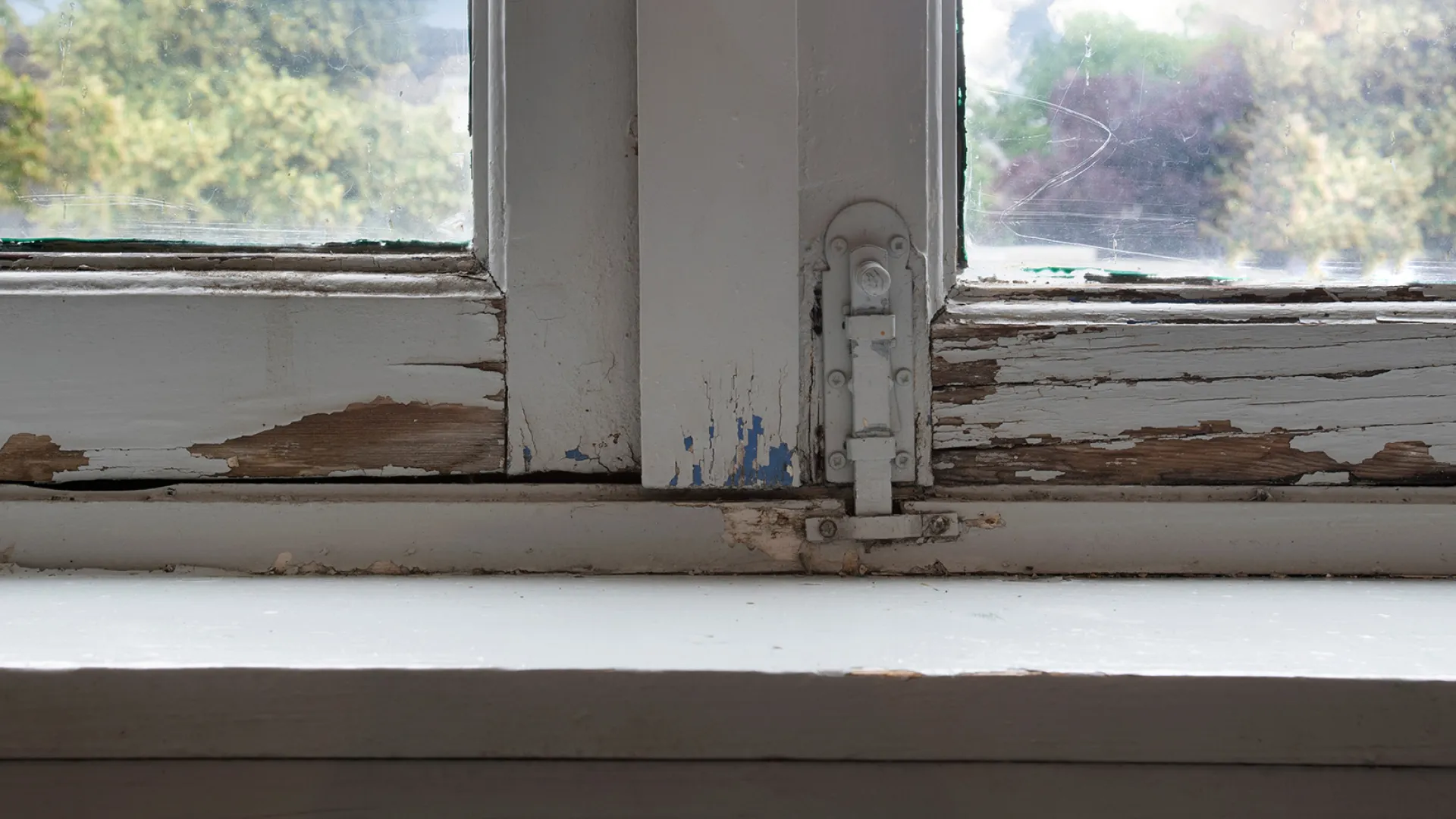
Window Wood Rot Guide
A Comprehensive Guide to Protecting Your Home from Wood Rot
Fortunately, wood rot can be prevented. In our Comprehensive Wood Rot Guide below, we'll walk you through how to identify, prevent, and fix wood rot issues with solutions like lasting replacement windows, so you can keep your home in tip-top shape.
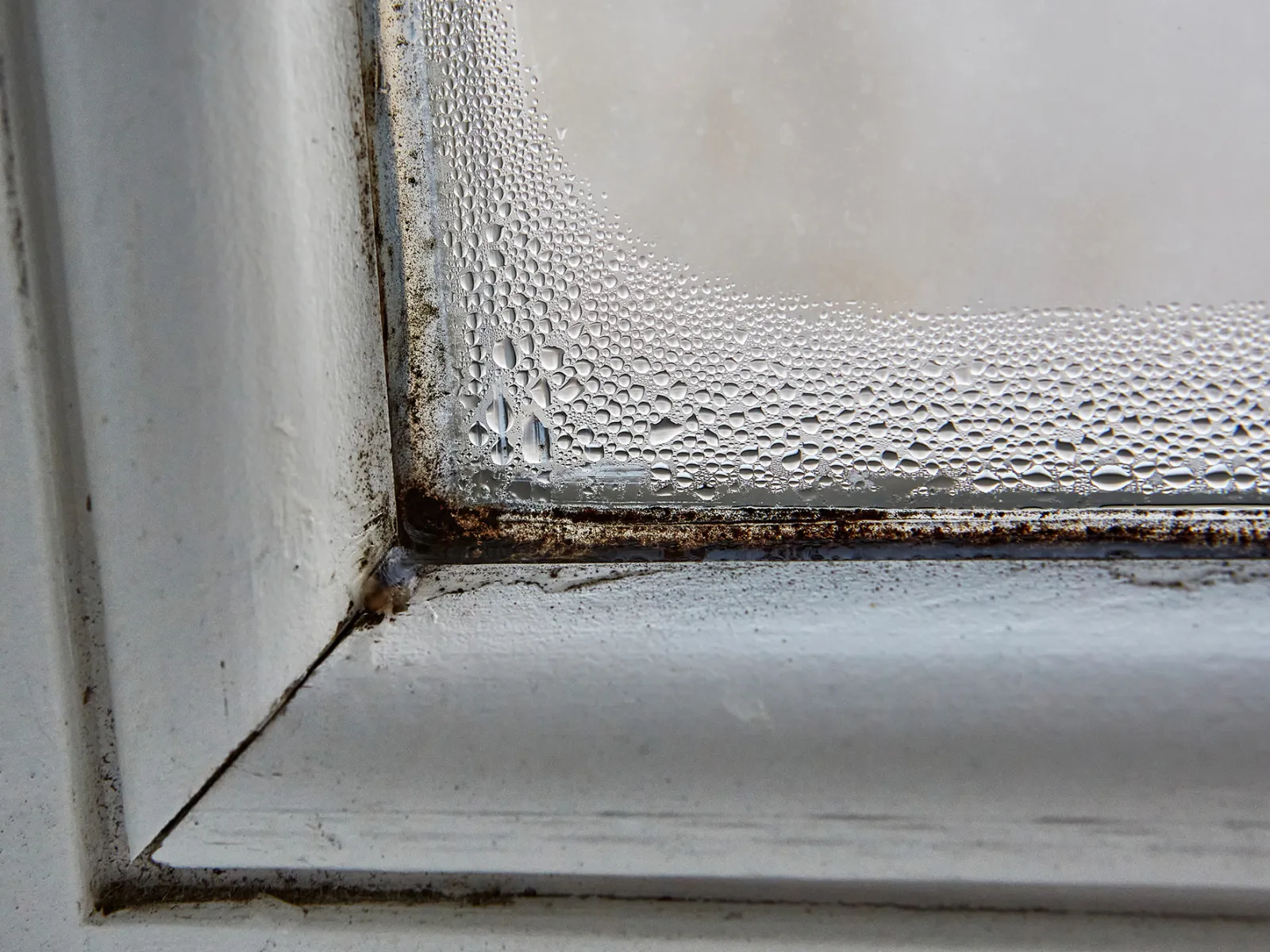
What Is Wood Rot?
This process occurs over time as the fungus is allowed to grow. So, it's important to remove all the affected rotting wood as soon as you can—to stop the rot from spreading to other parts of your home.
How Common is Wood Rot?
In the humid, seasonal climate of Georgia, wood rot is one of the biggest problems leading to window replacement. It's especially likely to show up on older homes with aging wood fixtures. But even in newer homes, many windows come with wood or wood-clad frames, sills, grilles and trim—all of which can be vulnerable to water damage.
Wood Rot Hinders Your Windows' Performance
Because dry rot causes wood to lose its strength and shape, your windows won't perform as well as they should. As the decay progresses, it can cause the window frames and sills to shift out of position, creating gaps between windows and exterior walls.
This looks unattractive, of course—but worse than that, it exposes your home to the elements and allows drafty air to get in, leading to higher utility costs and lowered energy efficiency. Plus, moisture infiltrates those gaps and weak spots, making it easier for leaks to occur, damaging your personal property and your house's overall structure.
What Happens if Wood Rot Isn't Promptly Addressed?
Like any form of decay or wear, wood rot will get worse the longer you allow it to occur. Left unchecked, the rot will spread to other areas in your home. Your house's underlying frame, support beams, eaves, roof underlayment, and more can begin to show signs of problems too.
Long-term, the result of wood rot is serious structural damage that compromises your property's structural integrity and can create an unsafe structure. The worse the damage is, the more complicated and costly it is to make the needed repairs. If you plan to sell your home, the compromised structure will negatively affect the asking price.
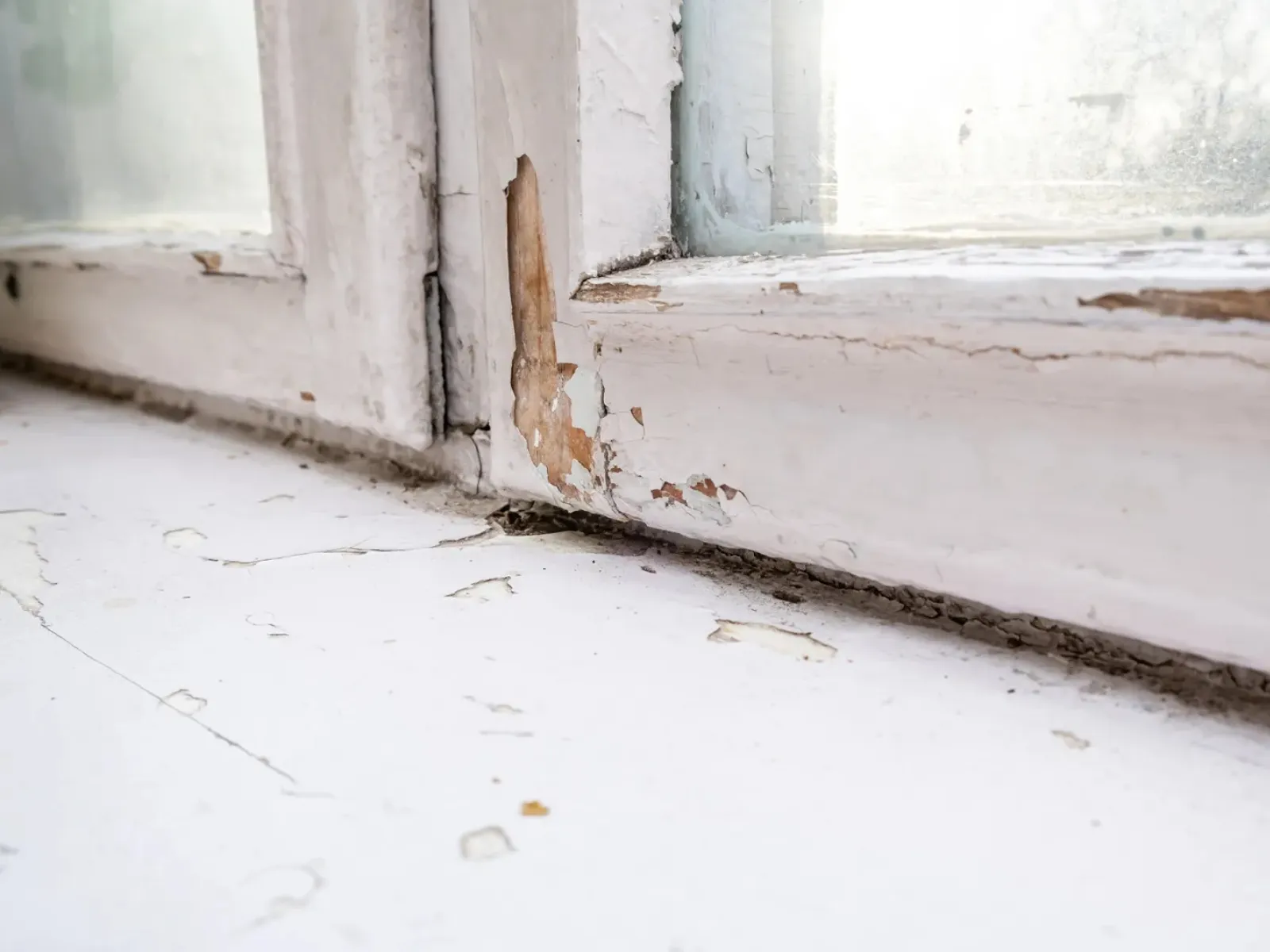
What Causes Wood to Rot around Windows and Trim?
There are two main culprits that lead to rotting wood—exposure to too much moisture and inadequate ventilation. In conditions where things get damp and stay damp, rot is sure to do its dirty work. And if your windows are low in quality or were poorly installed, your likelihood of dealing with wood rot is even greater.
Here's why.
1. Excessive Moisture
Georgia's inclement weather patterns cause frequent rain, ice, condensation, and humidity. The resulting moisture sneaks into vulnerable spots such as at the edges and corners of window frames. Then, damaging dry rot fungus begins to grow quickly and weaken the wood. If excessive moisture has damaged your windows, learn how to identify and eliminate humidity damage for wood windows.
2. Lack of Ventilation
Proper airflow around your home is key to reducing condensation and preventing moisture damage, leaks, and rot. If ventilation is blocked, dampness can linger until it seeps into wood window frames and trim.
3. Low-Quality Materials
Your windows' performance depends on their quality, so it pays to choose the best products on the market. Unfortunately, newer homes often have lower-quality windows, commonly used because they save construction companies money.
If this sounds like your situation, consider replacing your builder-grade windows to shore up your home's resistance to moisture intrusion.
4. Inferior Window Installation Techniques
The places where windows meet your exterior walls are vulnerable to moisture. So, your replacement windows need to be carefully measured, fitted, insulated, and caulked. If not, water will find a way in. Professional window contractors, like NG Windows, are skilled and trained in expert window installation techniques to ensure you get top performance.
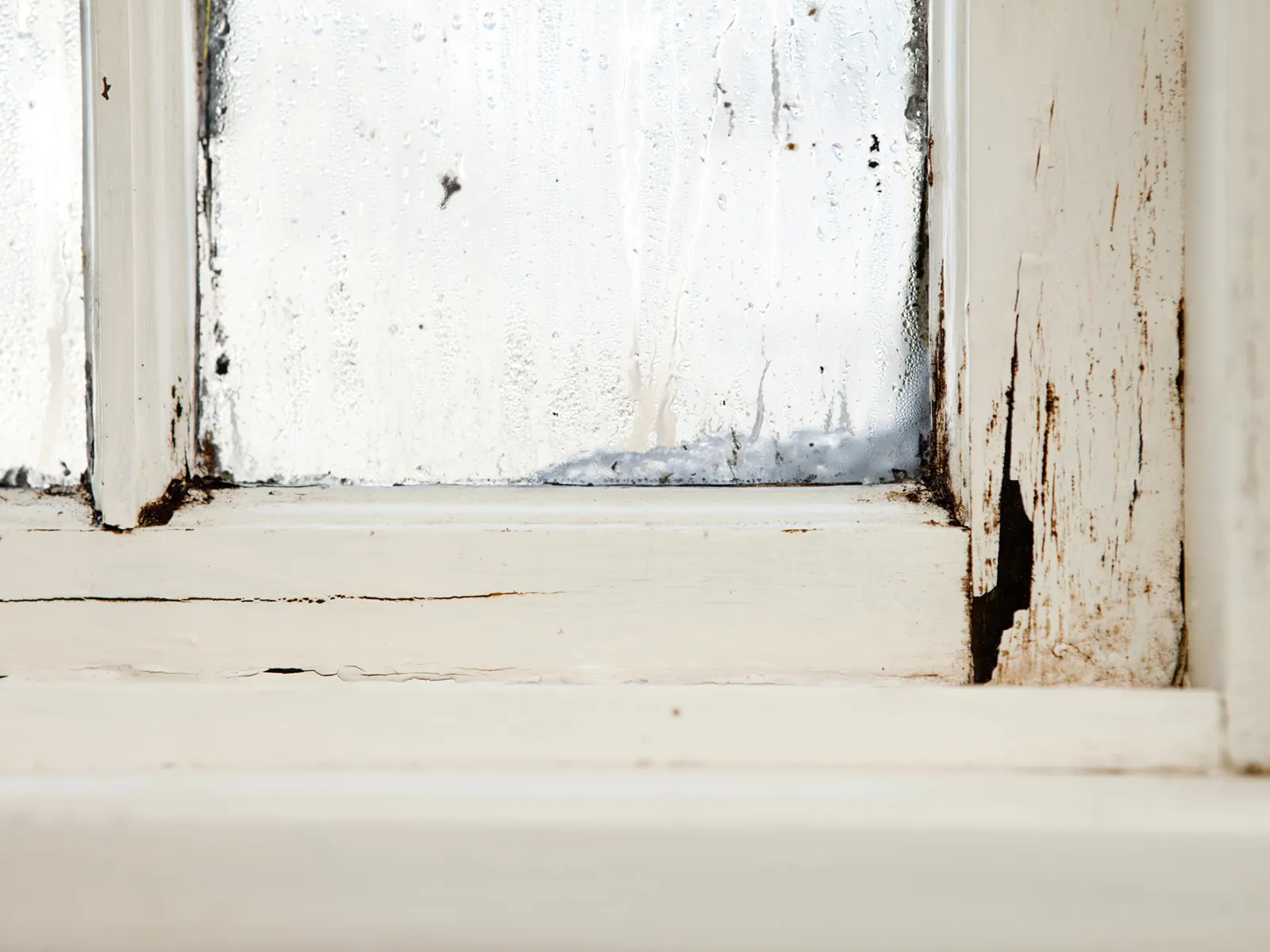
Spotting the Signs of Wood Rot: What to Look For
- Warped, Misshapen Surfaces. Since dry rot is a form of decay, the wood it affects begins to shrink, crack, and develop grooves or holes. Windowsills, frames, and trim look broken, uneven, pitted—and unattractive.
- Leaks. As your wood windows break down, it becomes easier for moisture to get underneath siding and inside your house. This often shows up as streaks or stains beneath windows—either on your siding or on interior walls.
- Spongy Feel. Decaying wood loses its hard, resilient surface and begins to soften as the dry rot progresses. You'll find it easy to strip pieces away or cause dents in the wood with a flathead screwdriver.
- Difficult Operation. Windows that are rotting will stop functioning normally, and may not easily open, close or lock.
- Blistered, Peeling Paint. Because rot weakens the wood's surface, paint can't neatly adhere to it. As a result, that paint will wear away sooner than it should under normal conditions.
- Missing or Broken Caulking. As dry rot progresses, windows shift out of their tight position, causing caulking to be damaged.
- Discoloration. Moisture damage can make rotten wood look darker or a different color than other, healthier parts of the window frame. If parts of your wood windows look different, discolored, or darker than others—for no obvious reason—that's a sign of rot.
- Inefficiency. Rotten wood windows don't perform properly, so you may notice higher energy bills or drafts. To check this, hold a candle next to the window to see how badly the flame flickers.
Inspect your windows and trim regularly for dry rot
Using the signs above as your guide, walk around your home both indoors and outside, looking for symptoms of rotting. If you notice any of these issues with your windowsills, frames, grilles or trim, don't ignore them. Instead, have a professional window contractor perform an evaluation to identify the root cause and assess any dry rot.Effective Ways to Prevent Wood Rot Around Windows
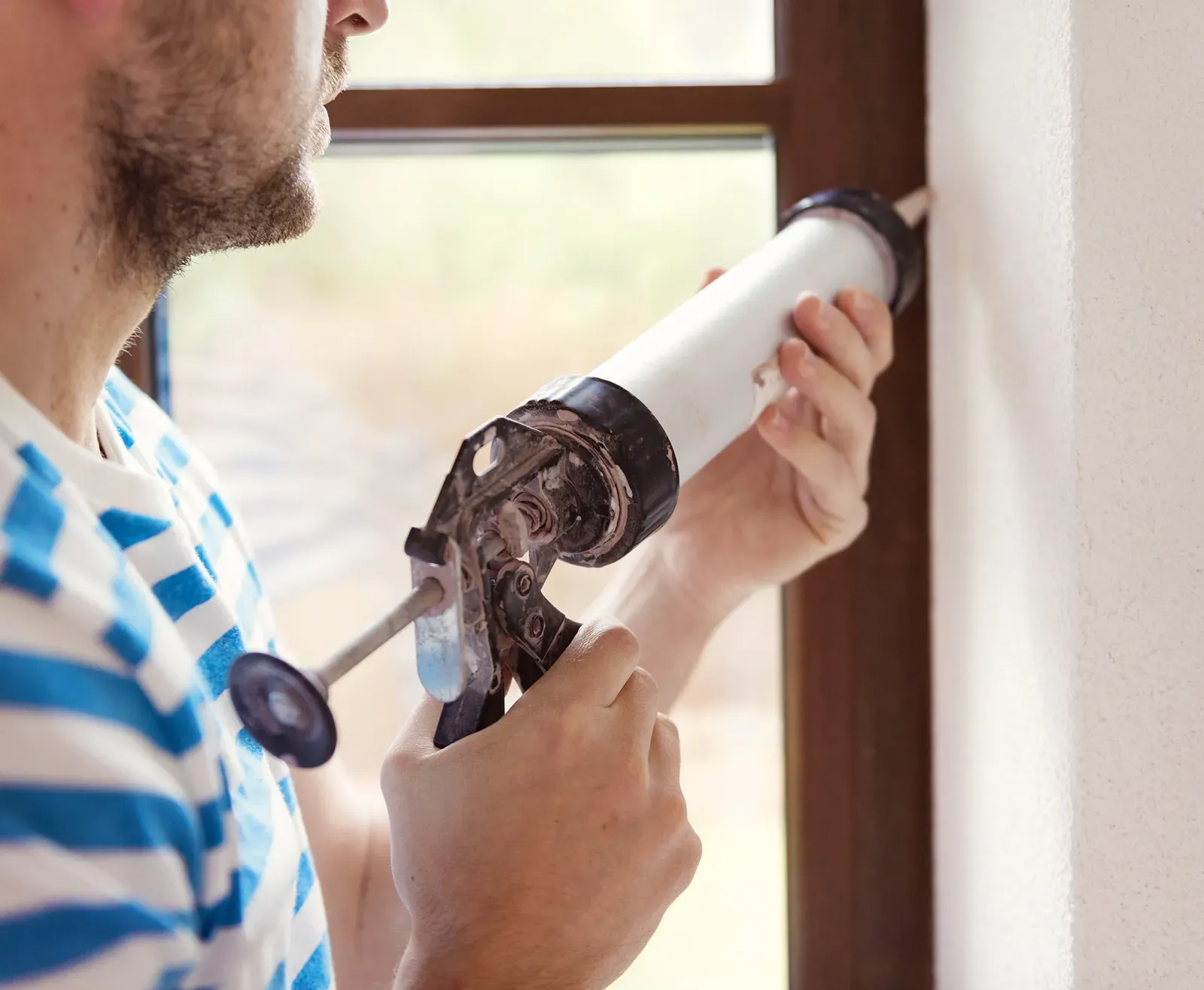
The best way to deal with wood rot around your windows and trim is to prevent it from happening in the first place. A combination of proper maintenance and good building practices makes prevention much easier.
How to maintain your windows to avoid wood rot
Take these steps to care for your windows and trim properly:
- Regularly check your windows, trim, and your home in general—inside and outside—to look for the early signs of wood rot.
- Ensure gutters and downspouts are clear of clogs and positioned so they drain water away from your roof, siding, windows, and foundation.
- Paint and stain wood windows and trim every few years to help protect them from moisture intrusion.
- Replace any missing or brittle caulking around window seams.
- If you notice signs of termites or carpenter ants, have your home treated immediately. (Wood rot and pest infestations often go hand in hand.)
Remember, if you see signs of wood rot, it's vital that you address the issue as quickly as you can to prevent further decay and avoid structural damage. The best approach is to bring in a trusted window contractor to remove all the damaged wood, treat the affected area, and install new windows.
Choosing the right window material makes a difference
Whether you're building a new home or replacing windows on an existing home, the window brand and material you select can lessen the likelihood of dealing with rot. Look for high-performing products with top ratings by independent testers—and pay attention to how they do with resisting moisture.
Some window materials rot easily, while others don't. Wood and wood-clad windows attract rot. Vinyl windows expand and contract a lot, and as a result they can end up with gaps where moisture can get underneath your trim.
If you want the best results, invest in high-performing Infinity from Marvin fiberglass windows for your home. Unlike wood, Ultrex fiberglass windows are made to stand up against weather and moisture, and they don't expand, contract or warp like vinyl. So, they deliver the best resistance against wood rot, especially when installed by experts.
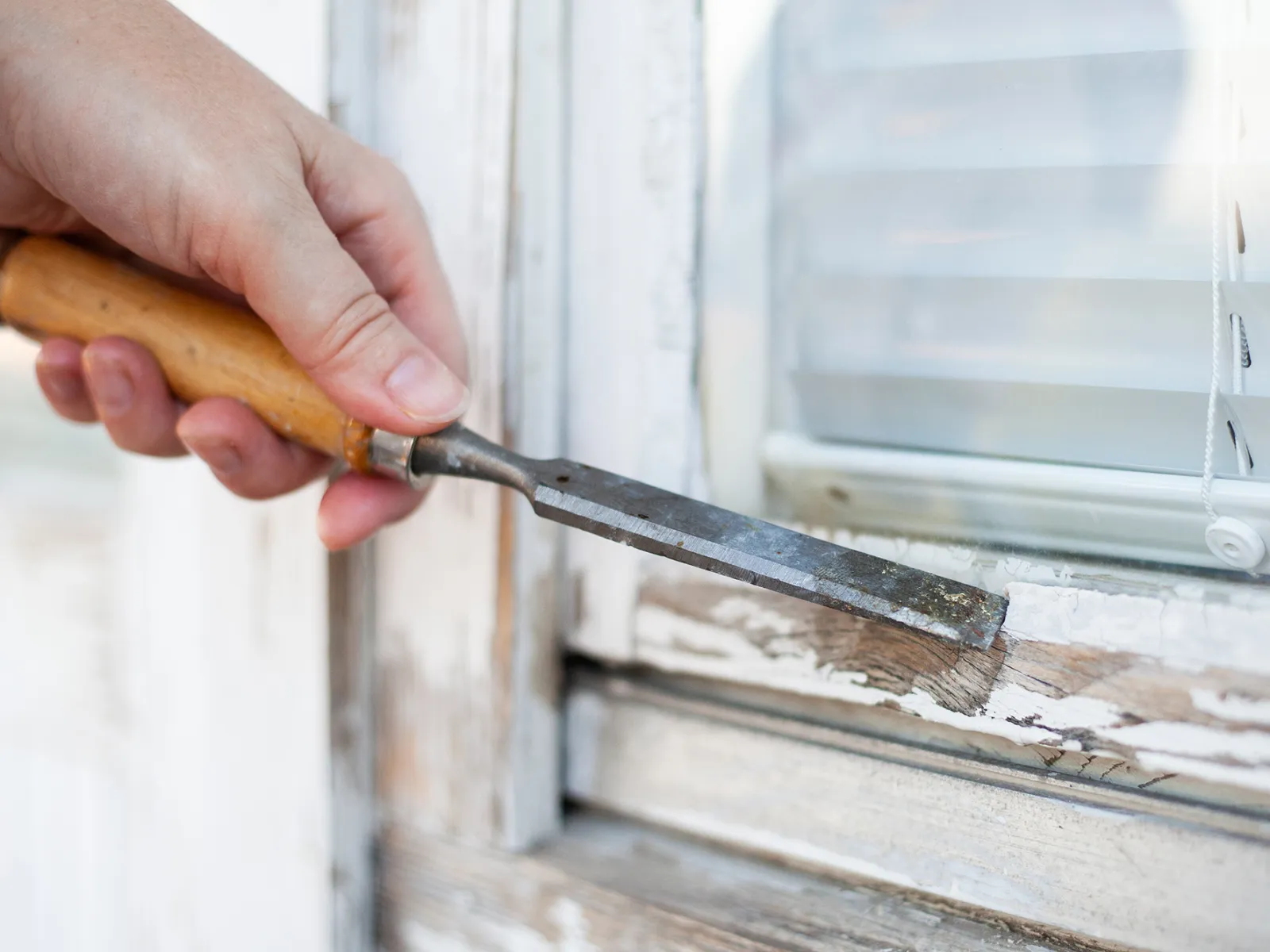
How to Fix Wood Rot around Windows and Trim
Since dry rot can quickly spread to healthy wood and multiply, it's a good idea to act fast to make repairs. Here are a few answers to questions you likely have about fixing wood rot:
Can wood rot be repaired—without replacing the window?
Signs of wood rot often appear first on a window's trim or sill. The issue may seem small, but it's not easy to judge how far the wood rot has spread at first glance. It's helpful to have a professional window company inspect your home to properly assess the problem.
Although some people prefer to make repairs by substituting rotten trim with healthy wood, our windows team strongly recommends full replacement of the entire window to ensure all the dry rot fungus is completely removed to prevent additional damage.
Is there anything homeowners can do themselves to address wood rot?
The number-one rule of dealing with rot is that the damaged wood must be removed. While we recommend replacing your windows if rot is present, if you are certain the damage is isolated to a very small area, you can attempt a DIY fix, but it may delay the inevitable: wood windows will need to be replaced at some point.
What if wood rot is found during a window replacement?
If you're in the midst of a window replacement when dry rot is discovered, what happens next will depend on how much the rot has spread.
- First, our windows team will immediately inform you of any wood rot we find as we replace your windows.
- If the issue is isolated to one small area, we will simply replace the affected trim.
- If there is significant, widespread rotting, we'll provide you with a change order for the additional labor and material costs—so the rot can be eliminated completely.
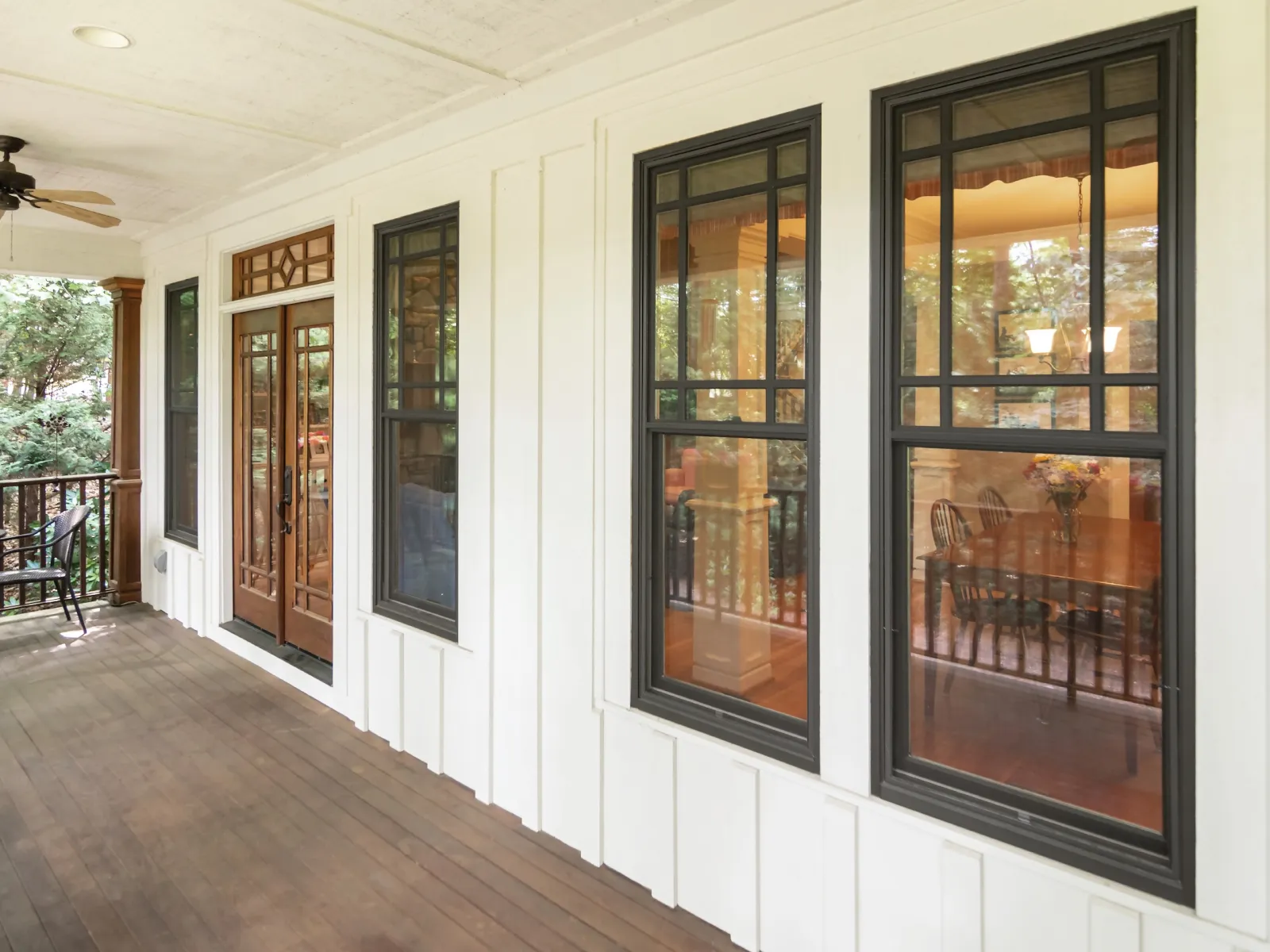
Why Choose NG Windows to Put an End to Your Window Wood Rot
At NG Windows, we're more than a local window company. We're strong supporters of the community, with a commitment to delighting homeowners with top-performing new windows that deliver lasting value.
We only offer and install Infinity from Marvin® fiberglass windows because of their proven strength and resistance to issues like dry rot and moisture leaks. And we stand by our products and services, offering a Lifetime Service Warranty for as long as you live in your home. Although this may be your first time replacing your windows, we want it to be your last.
Put an end to wood rot for good with attractive, sleek fiberglass windows that keep your home comfortable and protected for the long term. Learn more about our window replacement services or contact us today for more information.








